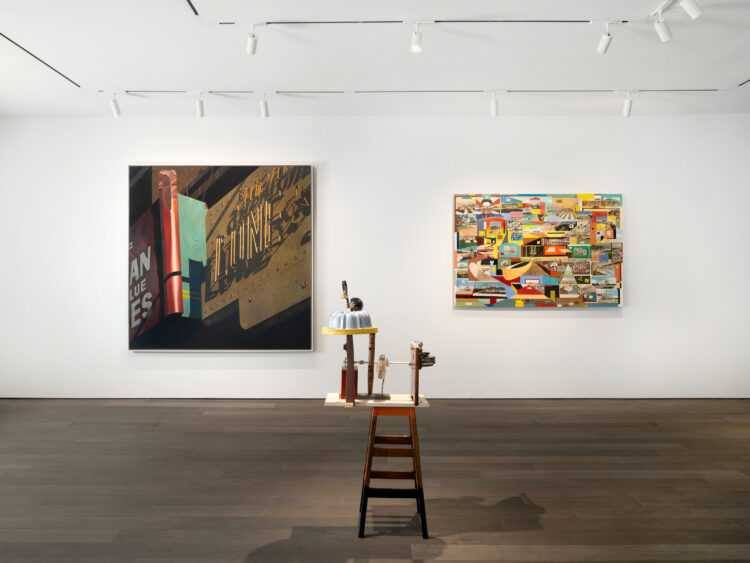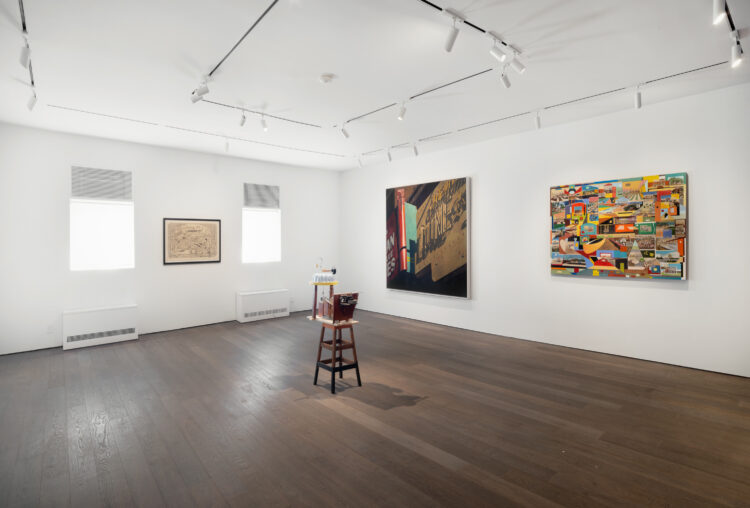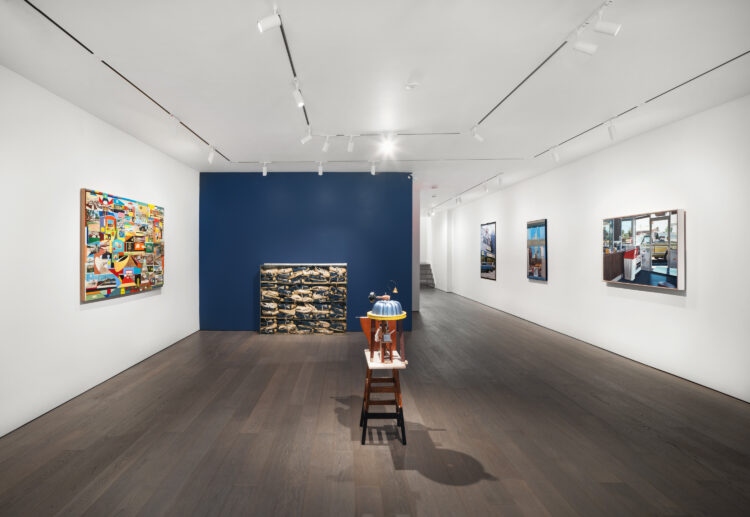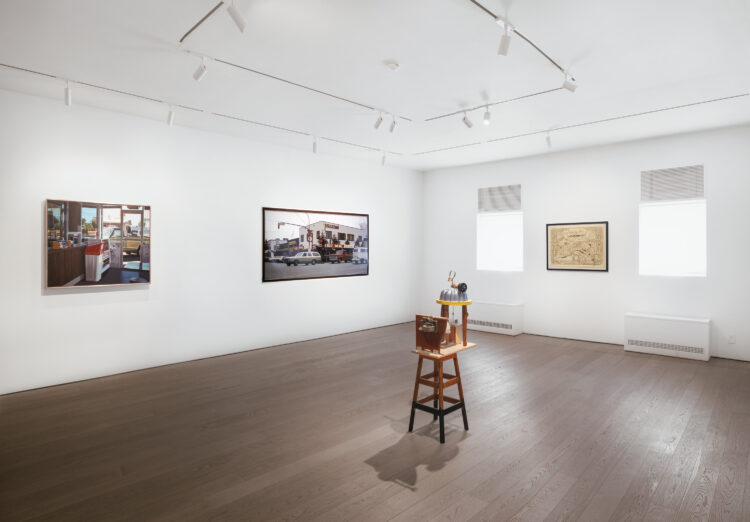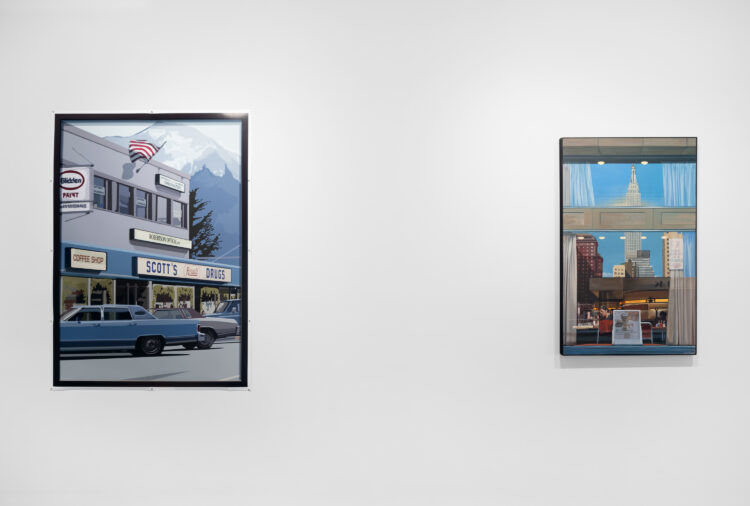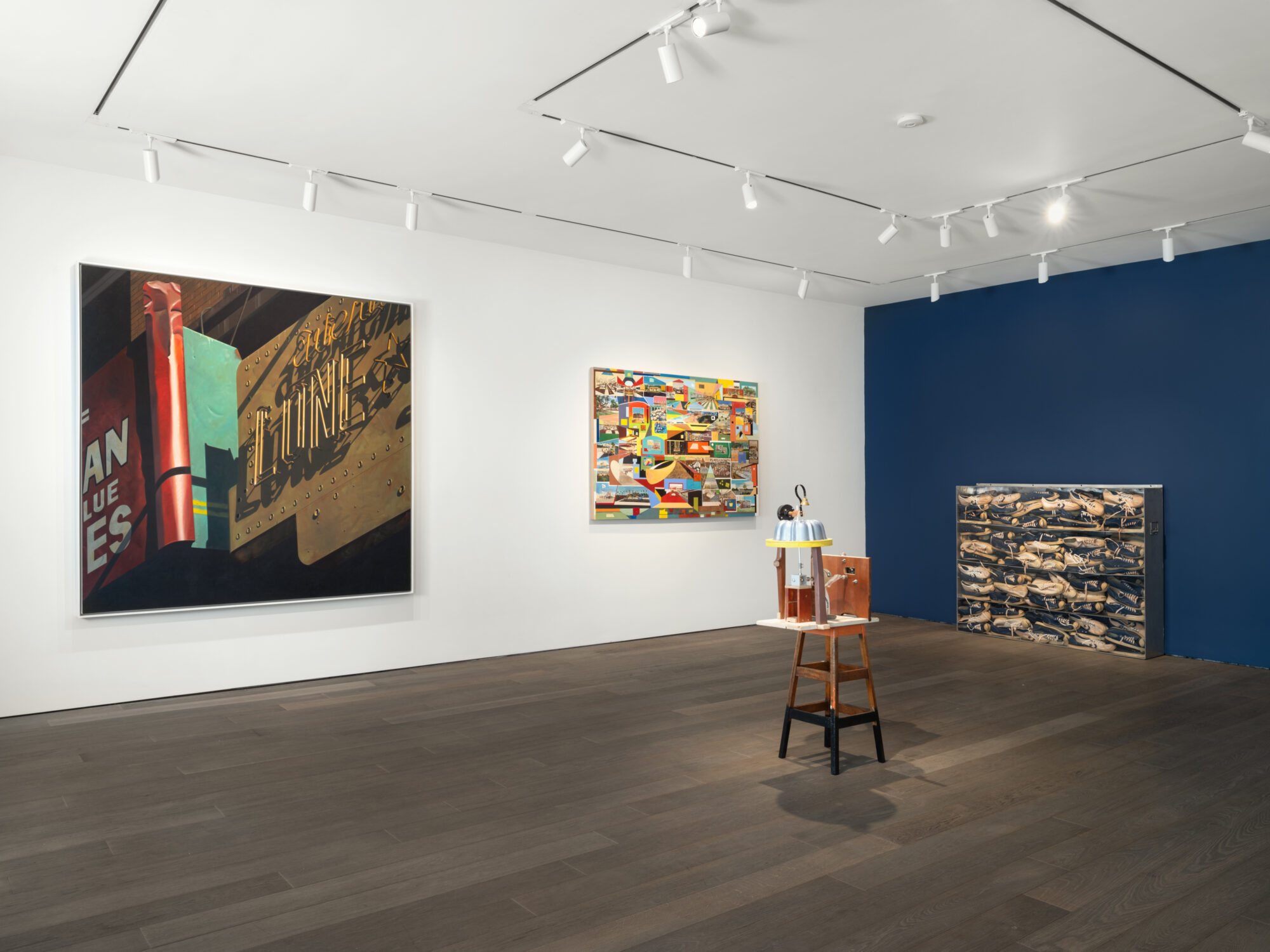
OPENING RECEPTION: SEPTEMBER 4, 2025 FROM 6-8PM
A Journey in America: An Artistic Road Trip Across the States
From September 5th 2025, Gallery Georges-Philippe & Nathalie Vallois in New York is proud to present “A Journey in America,” a compelling group exhibition that invites visitors to embark on a visual exploration of America through the visions of nine remarkable artists: Arman, Julien Bismuth, Alain Bublex, Robert Cottingham, Richard Estes, Ralph Goings, Martin Kersels, Duke Riley and William Wegman. This curated journey offers a multifaceted portrait of the United States, weaving together hyperreal urban vistas, conceptual interventions, and iconic visual language to reveal both the extraordinary and the everyday across the continent.
Richard Estes, Ralph Goings and Robert Cottingham, founders of American Photorealism.
Richard Estes is widely recognized as a pioneering figure of photorealism since the late 1960s. Estes’s paintings, precise and luminous, immortalize urban America – gleaming storefronts, reflective facades, and the intricate geometry of city streets. The oil on panel “Hot Foods”, offer a vision of the iconic Empire State building faithful to reality and strangely heightened, devoid of people and yet full of presence.
Ralph Goings’s “Interior” delves into the American vernacular. Goings sought beauty in the mundane: diners, pickup trucks, and the subtle drama of roadside scenes. With an eye for the textures of daily life, his work pays homage to the quiet poetry found on American highways and in small towns.
Robert Cottingham brings another layer to the American urban landscape through his meticulously rendered paintings of commercial signage and architectural typography. Cottingham’s focus on the language and symbols of city life-neon letters, storefronts, faded advertisements-captures the optimism and consumer culture of post-war America. Each painting echoes the country’s fascination with spectacle and self-invention, transforming ordinary signage into rich meditations on memory, communication, and place.
French artist Alain Bublex’s project « An American Landscape » is an experimental exploration of the American scenery, inspired by the 1982 movie First Blood (the first Rambo film). Bublex became fascinated with the role of the background in the film, observing that the landscape serves as a protagonist alongside the human character. To test this intuition, Bublex created a unique animated film by meticulously redrawing every shot from First Blood, erasing all traces of the characters and action, and preserving only the scenery and camera movements. In the exhibition, three pictures extracted from the animated film evoke the tradition of American landscape painting, from the 19th-century Hudson River School to the hyperrealists, while questioning the impact of cinema and photography on our perception of space and territory.
Famous for his portraits featuring Weimaraner dogs placed in human scenarios, William Wegman extends the journey with his work “Menu” (2023), part of the postcard paintings series, a distinctive body of work beginning in the early 1990s, in which the artist combines found vintage American postcards with painted interventions. Seamlessly merging printed imagery with imaginative painting, he created complex and sometimes surreal scenes. The series is marked by an unmistakable sense of play and invention, with the artist acting as a collector, storyteller, and scenographer, staging imaginary worlds that are both familiar and strange.
Arman was a founding member of Nouveau Réalisme, an influential art movement in 1960s France that sought to reassess the role of art in consumer society. The movement, alongside American Pop Art, marked a break from abstract and elitist traditions, emphasizing direct engagement with the material reality of modern life through acts of assemblage, destruction, and accumulation. His work « Crowded finale » features an accumulation of sneakers arranged in an aluminum box. This installation fits perfectly within Arman’s established practice: by presenting a mass of identical shoes in a display case, he invites viewers to reflect on themes of mass production, consumerism, and identity, especially pertinent in the context of American culture. Sneakers, iconic in American youth and street culture, are transformed from utilitarian footwear into both a monument and a commentary on repetition, desire, and obsolescence.
Duke Riley’s work on paper, “Map of the Kingsbury Run in Her Years of Splendor and Glory,” integrates deeply into the exhibition “An American Journey” by revisiting a lesser-known, yet symbolically rich episode in American urban history. The piece reconstructs the now-buried Kingsbury Run, a river in Cleveland notorious for its thriving shantytown communities during the Great Depression. Riley’s map artwork is not merely cartographic; it is a poetic act of recuperation, bringing back to visual and narrative life a space once considered a haven for itinerant populations marginalized by mainstream society. This artwork resonates with themes central to the American experience: mobility, displacement, and the shifting fortunes of invisible communities.
Julien Bismuth envisions a work that quite literally traverses the United States, retracing the historic route of the Pony Express, a legendary postal service that operated in the United States from 1860 to 1861, connecting Saint Joseph, Missouri to Sacramento, California, before being rendered obsolete by the advent of the telegraph. The artist plans to send copies of original “letter-drawings” to various post offices in iconic cities along the Pony Express’s historic path. Bismuth prompts reflection on slowness, distance, and the materiality of communication, reviving the imagination of an America traversed on horseback, letter in hand, across plains and mountains
Martin Kersel’s work frequently explores the tension between the body and objects, often using his own imposing physicality as both a subject and a tool, reflecting on themes of humor, failure, and the relationship between human action and its physical consequences. For the exhibition “A Journey in America,” Kersels is proposing a sculptural project inspired by the vast American landscape and its evolution, not as a smooth progression but as an unpredictable experience. In this process, the sculpture echoes the cross-country passage, the shifting nature of the journey, and the participatory ethos central to Kersels’ practice.
Together, these artists chart a ‘journey in America’ that is as much about perception as it is about geography. Ranging from the crystalline clarity of photographic works to playful interrogations, each piece functions both as a document and an invention, bearing witness to the diversity and complexity of the American and, more broadly, the contemporary art scene.
September / 05 / 2025
December / 20 / 2025
